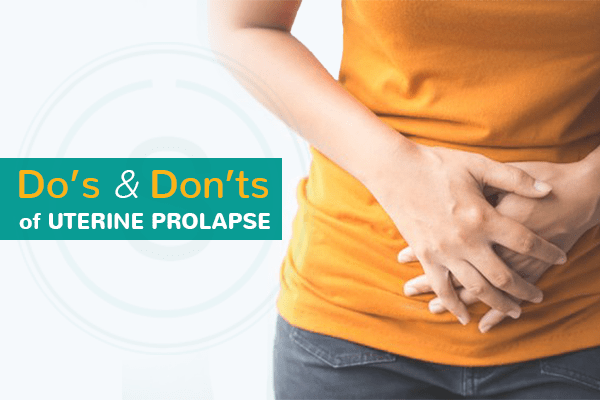Looking for help to manage uterine prolapse?
SMILES assist you with self-management strategies that help you deal with uterine prolapse problems.
Uterine prolapse or prolapsed uterine is one form of vaginal prolapse in women. The risk of prolapse increases with adult women, however, younger ones are also at risk of prolapsed uterine, and sometimes this condition is even diagnosed following childbirth.
What is Uterine prolapse?
Uterine prolapse is when the uterus has fallen down toward or into the vagina. It occurs when the pelvic floor muscles and ligaments become weak and are no longer able to support the uterus. In rare cases, the uterus can protrude from the vaginal opening.
However, any kind of damage to pelvic muscles and tissues during pregnancy and childbirth may also lead to prolapse. In women who have had more than one vaginal birth or any cavity that puts
pressure on the pelvic muscles can increase the risk of prolapsed uterine.
In severe cases, it is possible for the sagging uterus or bladder, it is called bladder prolapse, also known as a cystocele.
What are the symptoms of uterine prolapse?
Mild cases of uterine prolapse usually don’t cause any symptoms. But, uterine prolapse symptoms tend to become more apparent as the prolapse worsens including:
- ● Discomfort in the vagina, pelvis, lower abdomen, groin or lower back.
- ● Pressure or heaviness in the vaginal area.
- ● Frequent urination or feeling of urge to urinate
- ● Leakage of urine
- ● Frequent urinary tract infections
- ● Difficulty having bowel movements, such as constipation
- ● Lump coming from the vagina
- ● Difficulty with sexual intercourse
What causes a prolapsed uterus?
Pelvic floor muscles become weaker for a number of reasons. Here are some common causes of uterine prolapse that include:
- ● Pregnancy
- ● Difficult labor or trauma during childbirth
- ● Postnatal pelvic floor injury
- ● Chronic constipation or straining during bowel movements
- ● Chronic coughing
- ● Obesity
- ● Repeated heavy lifting
- ● Drop in the estrogen level after menopause
How to manage uterine prolapse?
There are a number of dos and don’ts that you can take to manage and protect your prolapse repair after surgery.
Do’s to manage prolapse
- ● Perform pelvic floor muscle exercises (kegel exercises) to strengthen pelvic muscles and support the weakened tissue
Practice good bowel habits. (never strain) - ● Maintain a healthy weight if you are overweight.
- ● Control coughing
- ● Increase the amount of fiber in your diet to prevent constipation and straining
- ● Drink 6-8 glasses of water each day
Always squeeze up your pelvic floor muscles before you lift, cough or sneeze - ● Use pessary to improve vaginal secretions and blood flow.
Visit a doctor for pelvic floor issues for any conditions that cause severe coughing and sneezing such as asthma and chest infections as they worsen bladder prolapse.
Don’ts to manage prolapsed uterine
- ● Do not strain during bowel movements.
- ● Avoid heavy lifting and bending
- ● Quit smoking (to reduce coughing)
- ● Avoid high impact sports (jogging, horse-riding, etc).
- ● Avoid heavy resistance training exercises (push-ups, sit-ups, etc)
- ● Do not perform intense core or abdominal exercises.
- ● Avoid fatty foods that lead to overweight.
Minor uterine prolapse or bladder prolapse can be treated with strengthening exercises of the pelvic floor muscles. But, once your prolapse has been progressed to a more advanced stage, it becomes worse that needs surgical treatment or pessary support – says Dr. Parameshwara, the best prolapse treatment doctor.
If you notice any of the uterine prolapse symptoms mentioned above, Do not ignore it.
Approach SMILES to avoid your risk of developing urinary incontinence, urinary retention, and difficulties with having regular bowel movements.

